Hydronic heating and cooling — worth the money?
I have been reading a lot about this Euro-style of heating and cooling homes. It's pretty standard overseas but is still considered a luxury in Oz. Even on Houzz they are doing stories about it - Is Hydronic Heating Right for Your Aussie Home?
Does anyone have it installed and can speak from experience? Would you consider it in extensions or in a rebuild?
In summary, the method "uses thermostat technology to keep the chill out of the air – recirculating hot water, either in panels or in-slab, heated by LPG, natural gas or solid fuel.
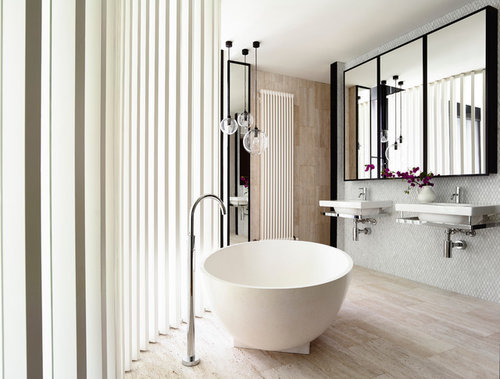
Comments (38)
Frank Ansell
6 years agoHi Bonagh,
I'm obviously biased since I'm a hydronic heating provider, but I think that some sort of home heating is essential in most Australian cities.
Hydronic heating is definitely at the luxury end of the scale. It's a different type of heating than a reverse-cycle air conditioner (ie, radiative heat rather than convective). So you're paying a bit extra to get a really luxurious environment within your home.
In terms of cost, hydronic won't be more expensive to run than any other heating system that is also designed to heat your whole home. The trouble is, most Australian houses have no heating system. So it's like saying, is it worth buying a BMW when my alternative is to have no car and just walk?
If you want a heating system that keeps your whole house warm, your options are some type of ducted system (either AC or gas), electric. or hydronic.
Of those, electric will be the cheapest to install but by far the most expensive to run. Ducted AC will be a little cheaper to install (depending on how it's done and how nice you want the grilles to look) than hydronic, with probably a bit higher running costs.
We've found it's very popular in new builds and extensions, although the renovations need to be fairly substantial, especially if you're going to put in a new heated floor slab. I wouldn't recommend trying to do hydronic on the cheap, it needs to be done properly.
Feel free to get in touch with any questions if you like, I'm always happy to have a chat!
Paul Di Stefano Design
6 years agoYeah, it's a no brainer! Definitely recommended if your budget can accommodate it - the only way to evenly heat a building - where possible underfloor/in slab, but panels very effective in retro-fit scenarios. Have done it on both new builds and extensions......when it comes to new builds it's a default & have actually always done it! ;) We installed it in just a small extension to our own home and it's literally set and forget, save for a small amount of tweaking thermostat either side of winter...cost around $5-6K for small in floor set-up on a 40m 2-level extension - stack that up against other heating options and it's actually not necessarily high cost in comparison when you factor in low running costs and the lifetime of the investment
M B
6 years agoI can't speak from experience, but after staying in an airbnb with hydronic, and coming from ductal gas houses over the last decades, Im going to go hydronic panels in our new build. More challenging to have panels in open living designs with lots of windows and not much wall space. Im not going slab heating as we want floorboards.
I'd be interested from Paul and LHL who install hydronic, what their thoughts are about 1) trench heating for the open living with lots of windows (pros and cons), and also 2) whether in the long term hydronic will be cost-effective compared to reverse cycle as gas prices go up and PV panel/battery storage comes in.Frank Ansell
6 years agoHi MB,
Thanks for your questions!
The main problem with trench heaters for large, open plan living areas with lots of windows is that the heat loss rate will be huge, which means you need enormous trench heaters. In my experience it's usually not practical to put them in, or if you do you'll still need some supplementary heating to make up the heat requirements.
In terms of maintenance, the trenches tend to get full of dust and are hard to clean out. So for those reasons I haven't found them to be popular.
Remember that Australian houses are built differently to European homes. A typical house in the UK might have a heating load of 5kW. In Sydney, a typical new home would have a heating load of 15-20kW. So straight away the heating system has to be designed differently, and a lot of European solutions don't work as well.
To your second question: I think it's a common misconception here in Australia that hydronic = gas. Even the BASIX assessment only recognises "Gas hydronic". Hydronic just means that you're using water to move the heat around. There are a variety of fuel options available including gas, electricity, diesel fuel or even firewood or coal.
You're right about reverse-cycle heat pump systems becoming more popular, especially with PV solar panels to drive them. We've found that those are becoming more popular as the cost of gas goes up. The main drawback is the install cost, heat pumps being more expensive than gas boilers.
So short answer is yes, I agree with you that long term, heat pumps (and PV) will be the way to go, although right now gas is still a popular choice mainly due to the low install cost.
Lastly, just on your point about floorboards - do you mean you're planning to have a timber floor and no concrete slab? Or timber boards over concrete? There are lots of timber flooring products on the market designed for use with heated slabs. In my experience it doesn't reduce the effectiveness of the heating system significantly. I can recommend some suitable timber flooring if you're interested.
Paul Di Stefano Design
6 years agoMB - similar opinion/stance to LHH's detailed response..........there are always options to consider and sometimes it depends on where you are located and whether you require a more responsive/zoned hydronic system set-up.......the projects I work on generally are contemporary/open plan natured (in Victoria) and hence the in floor option is usually the way to go unless it's retrofit into existing structure and can't be achieved - sometimes we split the system so it's panel solution in say the original part/separate rooms of the home and then in floor to the more open main living areas.....I have only done a trench in one particular case and whilst it was arguably successful, the space was small, so performance not an issue, but weighed up/in hindsight we should have split the system to panels and in floor and just used a higher cost timber floor product designed - would have been probably similar cost either way, but probably better performance when you factored in the additional structural costs to accommodate/set up and also would have negated the possibly less than ideal grill factor that in that case run the full length of the threshold to a set of bifold doors...........whilst I'm not a "specialist" like say LHH above, in this area I understand that the gas boilers are becoming more efficient (??) but yes there are technology developments with electrical heat pumps that can be used - but I think require a fair amount of room and also are noisy, so it's about working out what the best balance is for your particular situation....hope this helps :) PD
M B
6 years agoPD and LHH. Thanks for the advice and support. I actually wanted to do slab hydronic heating and have floorboards on top. However, I cannot find any real-life experience on the net about how good and bad they function over time, especially pertaining to the new engineered floorboards.
I see you both have used wood floor products on slab. Ive seen some of these wood products, and would be interested if you can recommend some wood products( whether it be via PM) that you have use. The issue im concerned about is 1) engineered floor boards are still wood and poorer thermal transfer compared to tile/slab and 2) The wood base stone floorboards: the wood component is so thin ~ 5mm!
Therefore with lack of real-life experiences on this, Im planning to do panel all around the house, and maybe spare the risk of slab leaks problem.
Maybe a solution to open plan living with windows is to design for walls to account for this, and maybe supplment with a trench where needed. I could always put a fireplace to act as a booster, but would like a thermostat timing system that can control heating, and therefore best to keep as one system!
Thank you. MB
Paul Di Stefano Design
6 years agoMy understanding is that the water circulating in the system is max. only 48 degrees or thereabouts, and if standard timber flooring is laid directly to the slab with suitable glues (as advised by some trusted Builders I collaborate with) there's no issue works similarly to tiles applied to slab....arguably the thermal transfer is not as good with timber as with tiles but still effective nevertheless...but there's a specific product called Heatwood (engineered flooring) which is designed for this application - it's however limited pre-finished options of certain species - check out http://www.elitetimbersystems.com.au/products/ or Ecotimber in Richmond Vic for info
Frank Ansell
6 years agoMB,
It depends on the type of timber flooring that you use. Generally, natural timbers are not so good as they contain a lot of moisture, and the heated slab dries them out which causes them to warp.
Any system that has the floor boards laid on battens with an air gap between the boards and the slab is not really suitable because the heat doesn't transfer properly from the concrete to the timber.
What you're looking for is an engineered laminate type of product. I recommend Premium Floors Australia www.premiumfloors.com.au. They bring in products manufactured in the Netherlands that are designed for use with heated slabs (common in that part of the world). They're very knowledgeable and can advise on appropriate products and installation. In particular the NSW manager Rob knows his stuff.
Yes, timber floor coverings are not quite as effective as tiles or polished concrete, but in practice as long as it's taken into account in the design, the system works fine. I've done lots of heated slabs with timber coverings.
Frank Ansell
6 years agobhp19,
Excellent question! In fact you have a couple of options for hydronic floor heating on a timber floor with joists.
One option is to install aluminium spreader plates under the floor boards with grooves moulded to allow the pipes to be installed. See this image:
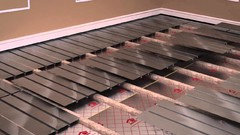
You fix the aluminium plates to the joists, install the pipes in the grooves, then put your floor boards over the top.
Alternatively, if that's not an option you can use a screed system to go on top of your floor boards. See picture below:
You lay your pipework into the pattern on the panels, then pour a cement screed over the whole thing and tile over the top. The whole thing is less than 25mm thick including the tiles. So if you can lose a little bit off your stud height then it's a good option.
Both of these methods are more expensive than pipework in the structural slab though, hence they're not as common here in Australia.Paul Di Stefano Design
6 years agoGreat info LHH....MB - When you stack up the costs I would guess the above options would arguably be better (performance) than trying to combine trench heating and a central fireplace - like always, comes down to crunching the numbers against your project priorities......as a designer, I'll never build walls up/change the building form just for the purpose to accommodate heating panels - if there are other benefits then that may be arguably a way around it but in your case if that compromises expansive glazing design of the home/living to connect indoor outdoor or a view or whatever then I'd say keep the room designed to your needs/gals spatially, with the knowledge that there are various options/solutions for services/heating one way or another :)
Catherine Epping
6 years agoWe have been looking at engineered wood to put over hydronic heating. One product is Mafi but it is very expensive. I would be interested in finding out more about Heatwood but can’t seem to find any Sydney suppliers.Frank Ansell
6 years agoHi Catherine,
Try Rob Harris at Premium Floors Australia. They're NSW based and have a huge range or engineered timber floor finishes designed for use with hydronic heated slabs.
Out of interest, have you got someone in Sydney lined up to design your hydronic system?
Fiona Murray
6 years agoWe are from the UK originally and have just started our new build. We have been gob smacked at how cold Australian houses get in winter - we live in the Barossa Valley, so temp range over the year is from 0 to 45. We have rented 7 different styles of house and that has determined that we are sacrificing size and some other Australian standard features so we can have good insulation, double glazing and hydronic in slab heating so we can be cosy in the winter.M B
6 years agoPaul: it does make sense to design the house functionally as the primary endpoint, but Ill see if the designer can at least consider panels heating. My builder, a custom builder, doesn't support floorboards on slab heating as I don't think he is happy to guarantee it, so there goes that option.
Catherine: I think you will fine Mafi the same as Heatwood. Have a look at how much difference in wood thickness there is between the 2 products. You see, with less wood, the better the thermal transfer. Again, can't find any personal anecdotes on floorboard on slab heating, and particularly in temperate climates like Tas/Melbourne/Canberra where heating is vital.
Frank Ansell
6 years agoHi Catherine, thanks for your response. Great to hear that you've got an architect who can help with your heating design. We're obviously based in Sydney and operate nationwide so if you're looking for someone to supply and install the system we'd love to hear from you.
Fiona - I totally agree! I'm also from abroad, and I was amazed at how cold Australia gets in winter, even here in Sydney. I think you're on the right track by building a little smaller in order to get better insulation and performance from the house.
MB - As a heating system designer, I would happily guarantee the performance of any system I supply. There are many timber flooring products that will work fine with heated slabs, it's a matter of including the floor covering in the engineering calculations and designing the system accordingly.
Natalie Hyde
4 years agoI know this is an old thread but has anyone used the hydronic panels for cooling as well? How effective are they? We are looking at installing hydronic panels for heating in our reno and are looking at cooling options. I would prefer an all in one system rather than adding a seperate cooling system but I can’t find much about the hydronic cooling.
Thanks
Frank Ansell
4 years agoHi Natalie, generally hydronic radiators are not suitable for cooling. It's possible to run radiant cooling using a cold water in a hydronic underfloor system, although it's important to note that these types of systems don't remove humidity from the air like an air conditioning system does.
ddarroch
4 years agoIt also should be noted that hydronic cooling shouldn't be used in a humid environment. If the temperature of the floor is lowered to the dew point (which may only be a couple of degrees below the ambient temperature in a humid environment), condensation will form in the floor.
However it could be an effective option in a dry climate, when the dew point will be far lower than the ambient temperature.
For example, if the ambient temperature is 40C & the relative humidity is 40% the dew point will be around 24C. So as long as the floor is not cooled as low as 24C, condensation won't form.
32C & 30% humidity, the dew point is a very low 12C. Cooling above this level will be fine, with regards to condensation.
So might be a cooling option for a dry climate like Adelaide, but not a good option for Melbourne or Sydney.
Natalie Hyde
4 years agoThanks for the info.
We have bearers and joist with a solid timber floor. Not all of the flooring is being replaced hence the panels.
We are in Canberra so humidity isn’t really an issue. What do others do for cooling?
Frank Ansell
4 years agoAir conditioning is probably the most common form of cooling. Most of the houses where we install hydronic heating also have air conditioning.
The most common alternative to AC is evaporative cooling. Basically, it's a box with a fan and a damp filter. The fan draws in outside air, through the filter which cools the air and then brings it into the house through ducts. It's cheaper than AC to install, but generally not as effective especially when it's very hot outside.
Many houses have no mechanical cooling, so you also need to ask if it's a priority for you. A lot of people go without and just open a window. It's personal preference though.
minebathroom
3 years agoLots of helpful comments and suggestions here, but their relevance is only good if one knows where the person lives ie Canberra is very different to Sydney.
I live in inland NSW - cold winters, hot dry summers.
We had hydronic heating panels installed into our 1930's house about 10 years ago. Absolutely love it, and after having suffered through reverse cycle, and then gas underfloor heating in previous houses would not use anything else. Cost is high but in our climate heating is essential. We are looking at building and considering whether to use a heat pump instead of a boiler, so we can be all electric. Jury is still out as the temperature of the water is not as high through the heat pump.
In our hot dry summers we use evaporative cooling. Once again, wouldn't recommend anything else, but we do supplement it with a RC system in the back, north facing living area after we have had a run of plus 40 days - so maybe use it about 5-6 days a year. It is what I consider to be our indulgence.
Hadn't thought about the condensation factor if using the hydronic panels with cold water - have seen it mentioned somewhere and wondered how it would work in our new place. I'd say a thumbs down.
Hope you sorted your problem Natalie - Canberra is far too cold to not have the best heating.
Bronwyn Woodbury
2 years agoGreat tips all. Cooling is my BIG question, but we live in Leura, so im presuming its a no goer for hydronic cooling.
Be glad of anyones comments.
Frank Ansell
2 years agoLeura is probably okay for a radiant cooling system, because the humidity is normally not that high. The main issue you'll probably find is cost to install that type of system, since there's no real off-the-shelf product you can use. Either an air conditioner or an evaporative cooler will be much cheaper to install and probably more effective.
Bronwyn Woodbury
last yearThanks Frank
Really appreciate your advice. We were considering an air-conditioner also.
I was mainly curious as to the cooling bit of hydronic
Many thanks
Fiona Murray
last yearWe instinstalled hydronic underfloor heating 3 years ago, one of the best investments we made. we can keep the house at a costant 23/24 degrees all year round.
highly recommend it.
Sadie Martin
10 months agoHello,
After reading all the past comments it would seem that Hydroponic cooling is not recommended? I'm doing a new build and like the idea of hydroponic panel heating throughout the house. So is it better to have an alternative cooling system? It will be necessary to go electric as only bottle gas in my area ( Robe SA) but hoping to install solar panels. House will be constructed on a slab. I know nothing about heat pumps, etc. and my builder has not had much experience with hydroponic heating/cooling.
Can anyone advise please?
Frank Ansell
9 months agoHydronic slab heating is fairly straightforward to install and not that expensive compared with other forms of central heating. If you try to cool the slab, it becomes a lot more complicated.
First up, cooling the slab does nothing to remove humidity from the air, which is a large part of what makes you feel hot.
Second, you need some way of controlling the heat pump between heating and cooling mode. Usually we use mechanical thermostats which switch on when the house gets below the set temperature, but when you change to cooling mode it needs turn on when the indoor temperature is above the set temperature, so instead of a standard central heating thermostat you instead need an electronic temperature sensor.
Anything is possible, but the short answer is that having a chilled slab will be more complicated and more expensive than an air conditioner, and less effective. You'll also need to find a contractor to design the system, and because it will be a custom design if you have any issues in the future you'll need to get the same person who installed it to come and fix it, which is a problem if they move, go on holiday, or close their business.
Sadie Martin
9 months agoThank you Frank for the advice....Sounds like a no go for the cooling then!
I wasn't planning on slab heating but rather the panels in each room and thinking the pipes go into the wall cavity?? Surmise that they are not efficient for cooling either?? Or maybe not even possible with the panels??
I would opt for central heating but am having exposed rafters in the lounge area so may prove to be impossible!
Frank Ansell
9 months agoHi Sadie,
It's not really possible to use radiator panels for cooling. You'd have to use fan coils instead.
Sadie Martin
9 months agoThanks for the advice Frank! Have you any suggestions for heating when my house has an exposed beam ceiling over the living areas?
minebathroom
9 months agoHi Sadie
I would investigate whether you can (being a new build) have your pipes running through the cavity walls - could be more efficient as they need to be insulated. We had hydronic heating in an old house for 12 years. Absolutely loved it but we have moved since. I would be reluctant to use it now as it needs a gas boiler to be effective and we all know what gas prices are doing. I am yet to find anyone who makes an effective electric boiler. If you find one, can you post here?
Currently investigating electric panel radiators - there seems to be a good prodect for about half the cost of hydronic.
Have a look at this:
https://wwwi.lvi-thermosoft.com.au with solar panels and back up could be perfect.
Kay Bodman
9 months agoFar better to invest in over insulating, building a passive house understanding the weather patterns using breezes to cool the house and cement pads on the western side which will heat in winter. Heat is gained or lost through the windows there placement, thermal rating and use in a passive house is key to keeping a good am Binet temperature throughout the year.
Bronwyn Woodbury
9 months agoThanks Kay
We are building in Leura, on bearers and joists with mdf flood boards, double glazed windows and above ceiling ducted rc air conditioning system.
Due to instal cost of hydronic, we had to forgo the idea.
We are hoping with the extra insulated roof - 55mm blanket - Bal29 specs, double glazed windows etc, we will benefit from overinsulating
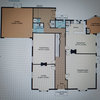
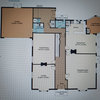
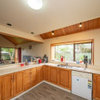
Sara Graham